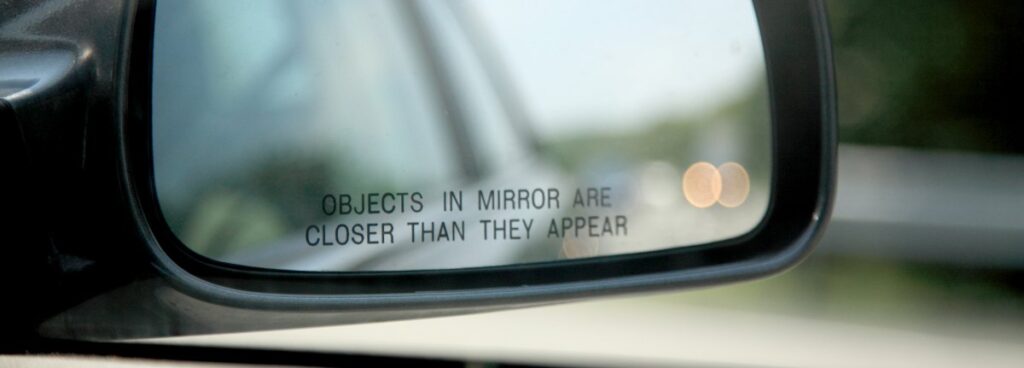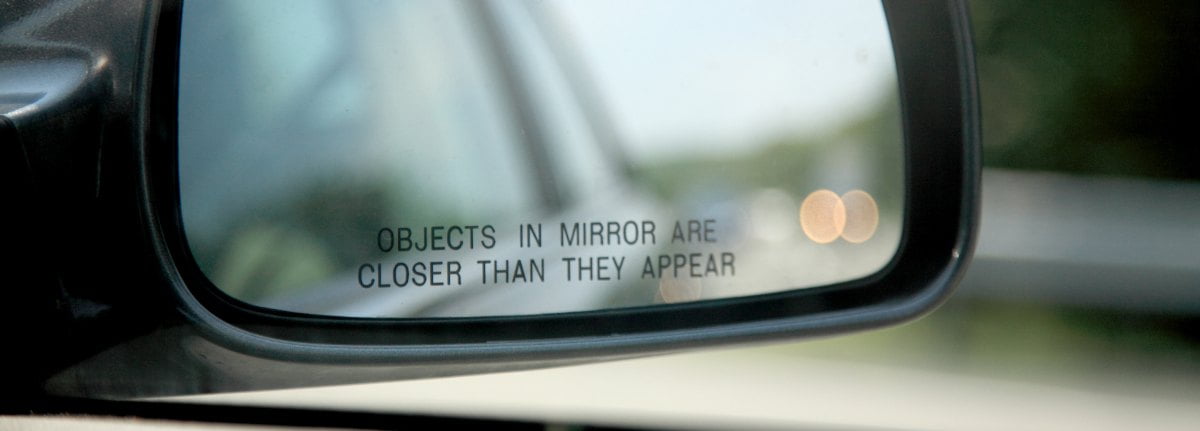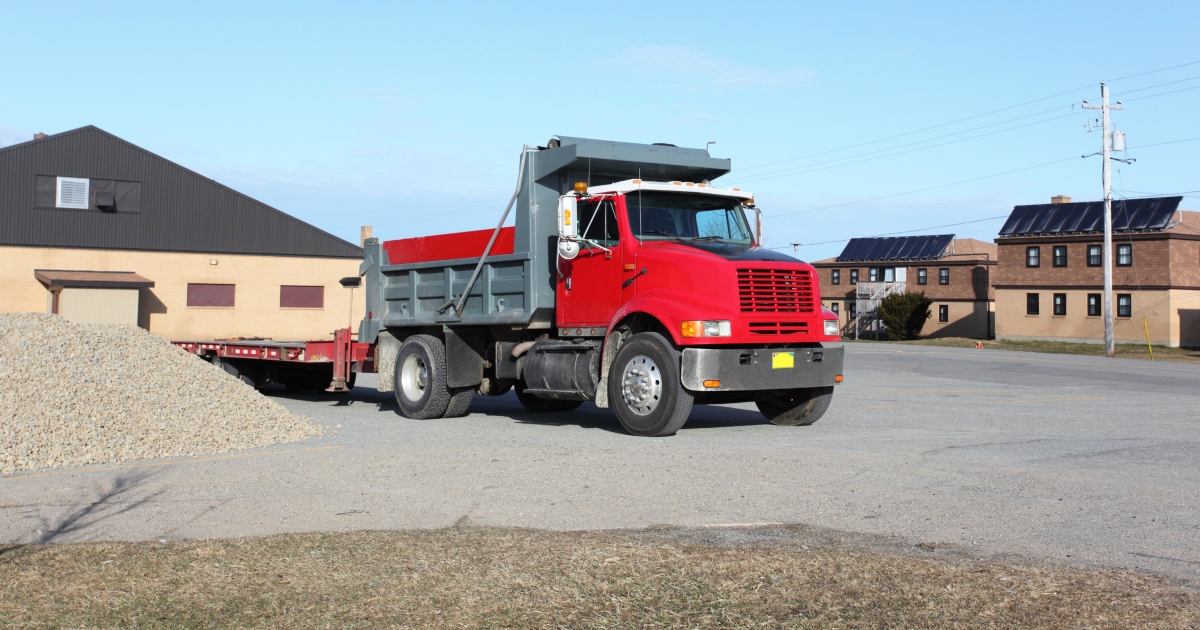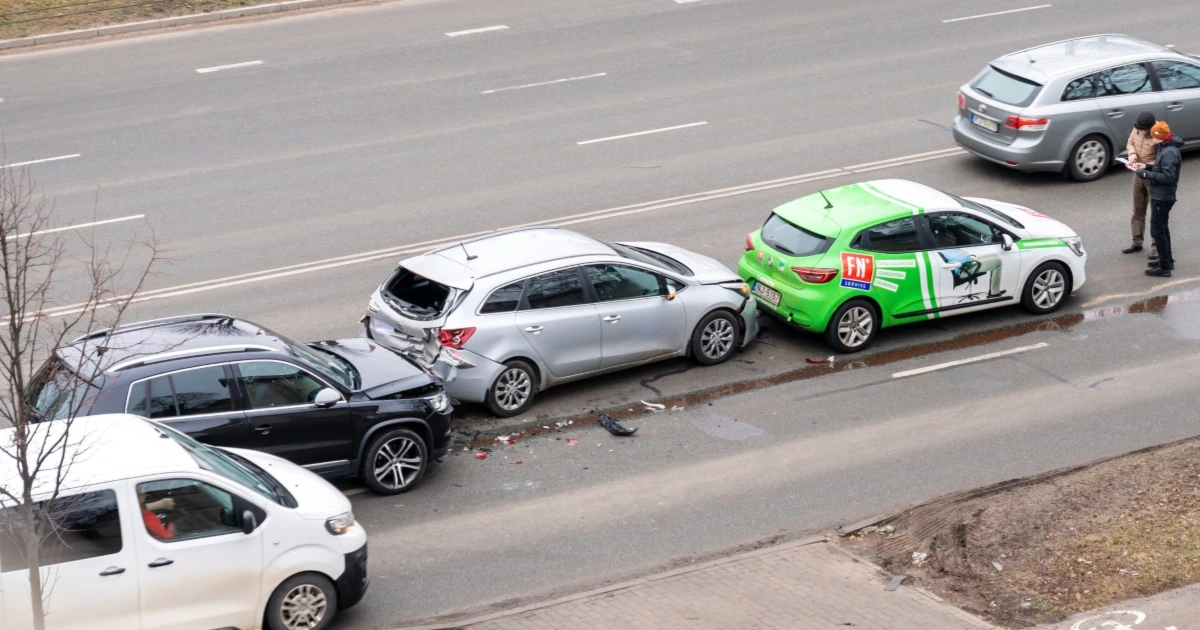Which Driver Could Be Held Liable For a Blind-Spot Accident in Cleveland, Ohio?

When a driver crashes into a vehicle that was in a blind spot, he or she might say the driver of the other car should be at fault. After all, this driver could not see the other vehicle in the side view or rearview mirror.
This may sound like a rational argument on its face. However, drivers need to be aware of their surroundings, which means checking their blind spots before merging or changing lanes.
Below, our experienced Cleveland car crash lawyers discuss blind-spot crashes in Ohio, explaining how they occur, where your vehicle’s blind spots are located, and who may be liable. If you have legal questions after this type of crash or any other type of collision, give us a call today.
Millions Recovered. No Upfront Fees For Our Services. Call 216-621-0070.
What Creates a Blind Spot?
Blind spots are areas around your vehicle that you cannot see in your mirrors. Mirrors can only reflect certain sections of the road around you, no matter how much you adjust them.
It is possible for another car to be right next to you without you knowing about it, simply because that car is in one of your blind spots.
The size of your vehicle’s blind spots often depends on the size of your vehicle. Larger vehicles tend to have larger blind spots, especially if your car is higher off the ground than the other vehicles around yours.
However, it is harder for large vehicles to hide in a blind spot. That means these vehicles are likely to be easier to see. On the other hand, pedestrians and motorcyclists can be harder to see when they are in a blind spot.
Where Are Your Car’s Blind Spots?
Every vehicle has blind spots on both sides, particularly the area that is on the right side of a vehicle and just behind the passenger window. If another vehicle is in that area, it is almost impossible to see him or her in your mirrors. There is also a blind spot right next to the driver’s side window and next to the rear passenger window.
Larger vehicles, like commercial trucks, have a blind spot directly in front of them. On commercial trucks this area extends to about 20 feet in front of the truck.
Commercial trucks also have a 30-foot blind spot behind the trailer. The blind spot on the right side extends out two lanes, while the blind spot on the driver’s side extends from behind the cab to a little over halfway to the back of the trailer.
How Blind-Spot Accidents Occur
Blind-spot crashes usually occur when a vehicle is changing lanes or merging. The driver who is making the maneuver fails to check for cars in a blind spot and crashes into one. Even though both parties have a responsibility to help ensure safe merging, the driver who is merging has the primary responsibility for avoiding a crash.
Blind-spot crashes can also occur when drivers are backing up, such as when they are backing up out of a parking space. A pedestrian, bicyclist or motorcyclist could be behind them to the right or left and they might not be visible in the rearview mirror.
The good news about these types of crashes is that many newer vehicles have backup cameras that allow drivers to see most of what is behind them. That said, these cameras should never take the place of physically looking behind you to ensure it is safe to back up.
Sometimes the collision is a sideswipe. However, at high speed, there is a high potential for the collision to cause severe damage or even a rollover. This might happen if the rear quarter of the car that is changing lanes/merging hits the front quarter of the other vehicle. This could cause the merging car to spin out and if it hits something else, the car could tip over.
What You Should Know About Liability For a Blind-Spot Crash in Cleveland
Every Ohio car crash is unique, but there are some general rules about fault. If a driver hits a car in one of his or her vehicle’s blind spots, he or she is likely to be held liable.
Drivers must check their blind spots before changing lanes or backing up. If you are changing lanes or merging, the car that is in the lane you want to move into has the right of way. You should only merge or change lanes when it is safe to do so, which means you should only make a move when you have the space to do so.
Drivers cannot argue that they should not be held liable because they were unable to see the other car. They have a responsibility to look for the other car. They cannot say that their lane-change warning system or rear camera failed them. Drivers have a duty to operate their vehicles safely, especially when changing lanes or backing up.
Although it is generally a bad idea to sit in another car’s blind spot, it is highly unlikely you will be held liable if that other car hits you. You have a right to make full use of your lane, just as other drivers do.
Can The Driver Who Was in the Blind Spot Be Held Liable?
There may be situations when the driver who was in the blind spot could be held partially or even fully liable. For example, this might happen if the other driver sped up into a blind spot at the last second, as the other driver was merging or changing lanes. In this situation, the driver of the car with the blind spot may be able to successfully argue that he or she could not see the other car.
If both cars were merging at the same time, fault may be shared by both parties, as both may have been negligent about checking for other cars.
How Can I Avoid a Blind-Spot Accident?
You should not count on other drivers to look before they back up or change lanes. Many drivers operate their vehicles in a negligent manner, which is why there are so many collisions every day.
Whenever possible, avoid driving in another car’s blind spot. This is especially important if that vehicle is a commercial truck. A collision between a commercial truck and a passenger vehicle could be fatal or result in life-changing injuries.
Sometimes all you need to do is speed up or slow down just a little bit to get out of another vehicle’s blind spot. You can also change lanes. However, you should not speed or make unsafe lane changes to get out of a blind spot.
Before you change lanes, make sure another vehicle is not in one of your blind spots. You will need to physically check to be sure. Before you drive, make sure there is nothing in your car obstructing your view of a blind spot. This includes headrests or other clutter in your vehicle.
You can also adjust your rear and side-view mirrors to reduce the size of your blind spots. That way you will only need to check a small area to be sure a car is not there.
You might also consider upgrading your mirrors. You can add blind-spot mirrors to your vehicle or replace your side-view mirrors with convex mirrors.
Contact Us Today to Discuss Your Potential Claim For Compensation
Unfortunately, drivers often do not check their blind spots before changing lanes or merging into another lane. This often leads to serious crashes and severe injuries.
If you are dealing with a significant injury from a crash in Cleveland, our attorneys at Friedman, Domiano and Smith are ready to help you explore your legal options. The initial legal consultation is completely free. We do not get paid unless you get paid.
Give us a call to find out more: 216-621-0070.
Comments are now closed




Comments